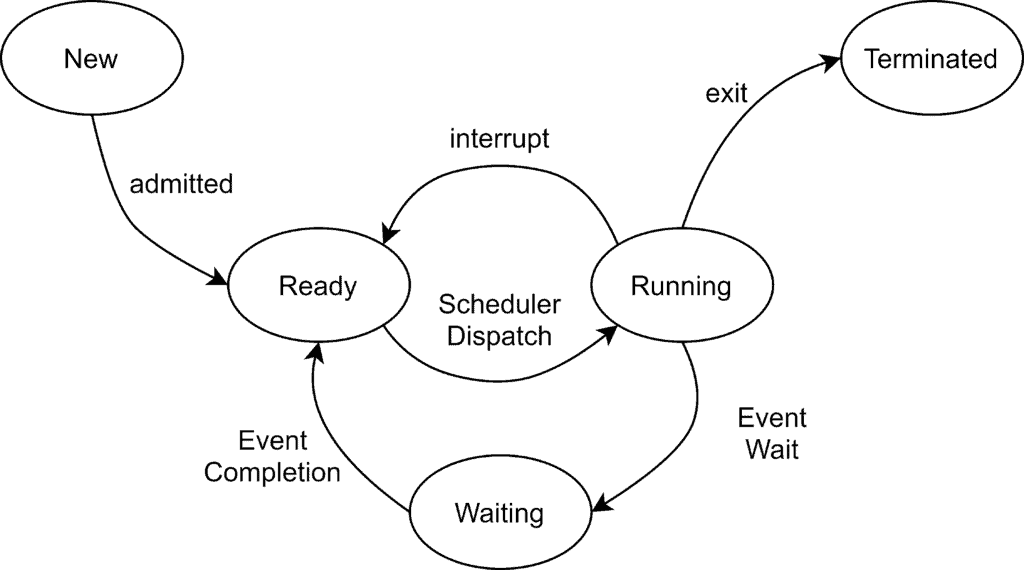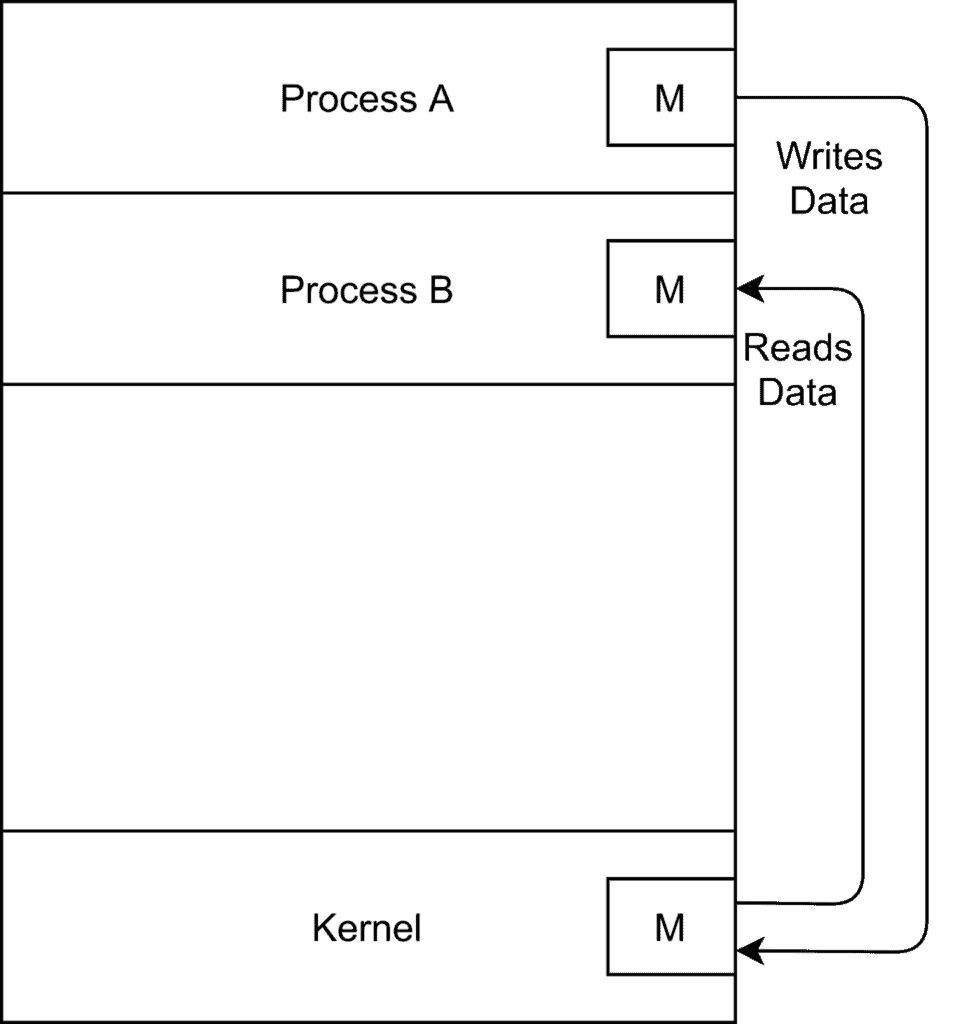1. 进程与进程间通信概述
现代操作系统中,进程是执行任务的基本单位。多个进程并发运行时,往往需要相互通信以完成协同任务。这种通信机制称为 Inter-Process Communication(IPC)。
在本文中,我们将了解:
- 什么是进程及其状态
- 进程控制块(PCB)
- 进程的分类:独立进程 vs 协作进程
- IPC 的概念及使用场景
- IPC 的两种主要通信方式:共享内存与消息传递
2. 进程基础概念
2.1. 什么是进程?
程序在运行时即为进程。进程是一个活动的实体,不仅包含程序代码,还包含以下内容:
- 堆栈(Stack):用于存储函数参数、局部变量等临时数据
- 数据段(Data Section):用于存储全局变量
- 堆(Heap):运行时动态分配的内存区域
2.2. 进程控制块(Process Control Block)
进程控制块(PCB)是操作系统中用于描述进程状态和属性的数据结构。它包含以下关键信息:
- 进程状态(如就绪、运行、等待)
- 程序计数器(PC)
- CPU 寄存器状态
- 内存管理信息(如页表)
- 调度信息(优先级、调度队列等)
PCB 是操作系统管理进程的核心结构。
2.3. 进程状态
进程在其生命周期中会经历多个状态转换:

状态包括:
- 新建(New):进程刚被创建
- 就绪(Ready):等待 CPU 调度执行
- 运行(Running):正在执行
- 等待(Waiting):等待 I/O 或其他事件完成
- 终止(Terminated):执行完成或被强制终止
3. 进程类型
系统中并发运行的进程可分为两类:
✅ 独立进程(Independent Process)
不与其他进程共享数据或相互影响的进程。✅ 协作进程(Cooperating Process)
需要与其他进程共享数据或协同工作的进程。
协作进程之间必须进行通信,这就引出了 IPC 的概念。
4. 进程间通信(IPC)概述
4.1. 什么是 IPC?
IPC(Inter-Process Communication)是操作系统提供的一组机制,用于协作进程之间交换数据和信息。
4.2. 为什么需要 IPC?
以下是进程间通信的主要原因:
- ✅ 信息共享:多个用户或进程需要访问同一份数据(如共享文件)
- ✅ 提升计算速度:将任务拆分为多个子任务,通过多进程并行处理
- ✅ 模块化设计:应用程序常被拆分为多个进程,例如 Chrome 浏览器为每个标签页创建独立进程
5. IPC 的通信方式
有两种主要的 IPC 通信模式:
5.1. 共享内存(Shared Memory)
共享内存是一种高效的进程间通信方式,多个进程共享同一块内存区域:

- 一个进程创建共享内存段
- 其他进程将该内存段映射到自己的地址空间
- 多个进程可读写该共享区域
⚠️ 注意事项:
- 操作系统默认不允许进程访问其他进程的内存
- 共享内存需要进程之间达成“协议”才能访问
- 必须引入同步机制(如信号量)以避免竞争条件
5.2. 消息传递(Message Passing)
当共享内存不可行时(如分布式系统),可以使用消息传递机制:

在这种模式下,进程通过操作系统传递消息进行通信:
直接通信:进程直接指定发送或接收方
例如:send(B, message)表示 A 向 B 发送消息间接通信:通过邮箱(mailbox)传递消息
例如:send(X, message)表示发送到邮箱 X同步机制:发送或接收时可选择阻塞或非阻塞模式
缓冲机制:消息可暂存于队列中,队列容量可为 0(无缓冲)、有限或无限
✅ 典型示例:生产者-消费者问题
生产者进程生成数据,消费者进程消费数据。两者可通过共享内存或消息队列进行通信。
6. 总结
本文我们介绍了操作系统中进程的基本概念及其生命周期状态。随后我们讨论了进程间通信(IPC)的重要性及其实现方式:
- 共享内存:适用于高性能通信,但需同步机制支持
- 消息传递:适用于分布式系统或无法共享内存的场景
理解 IPC 是构建并发、分布式系统的基础。无论是多线程编程、网络通信还是微服务架构,IPC 都是不可或缺的核心概念。掌握其原理有助于我们在开发中避免踩坑,写出更高效、稳定的系统。